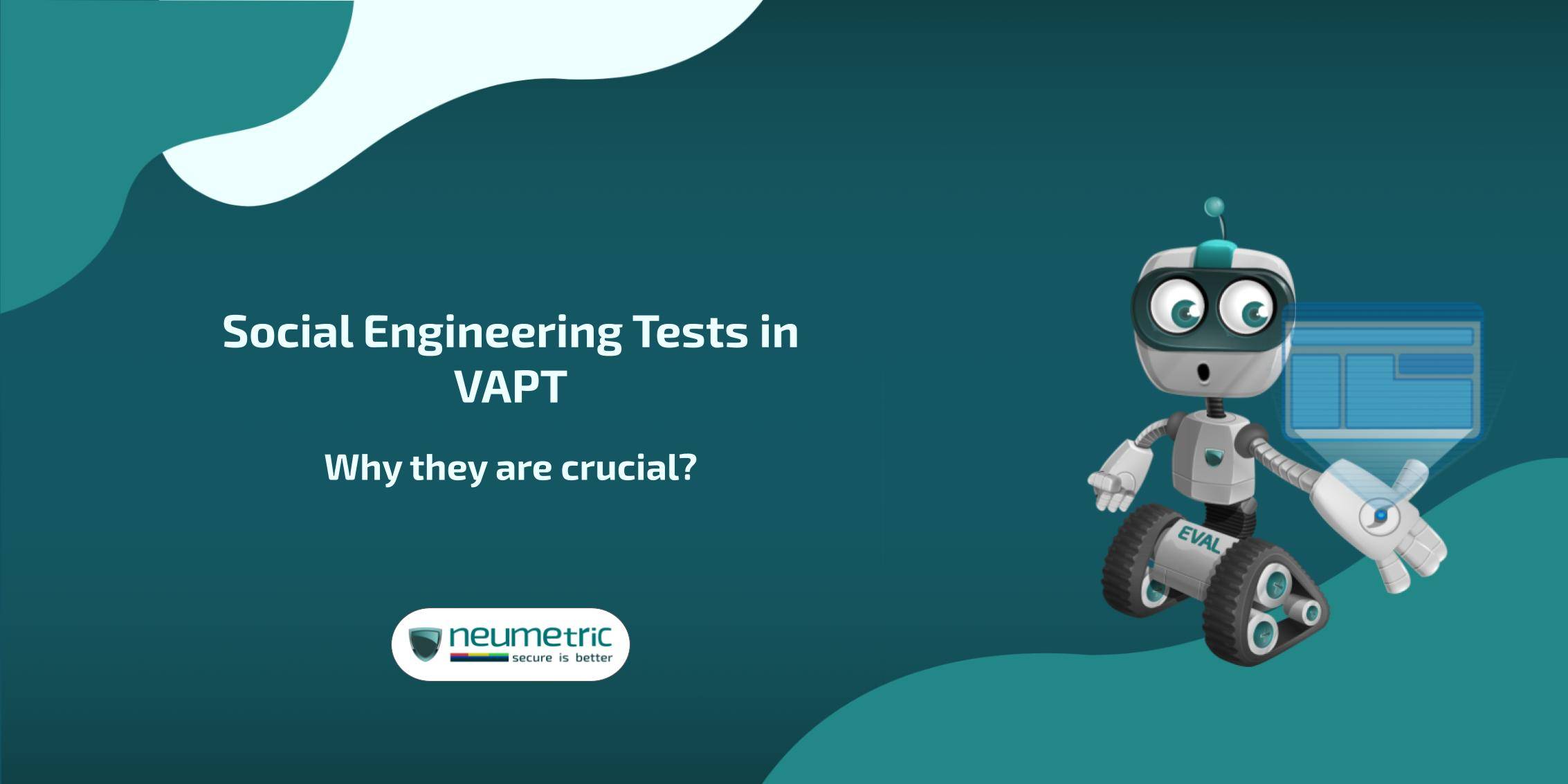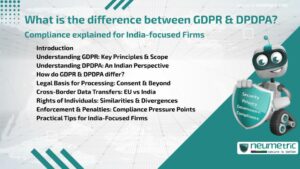Introduction
Alright, so what’s VAPT all about? In simple terms, it’s like the Sherlock Holmes of the digital world, but instead of solving crimes, it’s uncovering vulnerabilities in your system. Vulnerability Assessment & Penetration Testing [VAPT], is a proactive approach to identifying & fixing security loopholes before the cyber baddies find them.
Picture this: A few decades ago, the digital realm was a wild, wild west with little regard for security. Fast forward to today & we’re living in a world where cybersecurity is as crucial as locking your front door. VAPT has evolved over the years, from a nice-to-have to a must-have, as we’ve realised that prevention is a whole lot better than dealing with a digital catastrophe.
Imagine if a hacker could just stroll through the front door of your digital fortress without even breaking a sweat. That’s where social engineering comes in. It’s not about fancy code or sophisticated malware; it’s about tricking the human element, the soft spot in every security setup.
Table of Contents
ToggleSocial engineering tests in VAPT: Why are they crucial?
We’re all guilty of it – clicking on that enticing link or opening that too-good-to-be-true email. Social engineering tests focus on exploiting this vulnerability because, let’s face it, we humans are the weakest link in the cybersecurity chain. By simulating real-world attacks, VAPT with a social engineering twist helps organisations understand how easily their staff can be manipulated.
Think of social engineering tests as the cybersecurity equivalent of fire drills. You don’t want your team figuring out how to respond to a breach when it’s actually happening. These simulations create a controlled environment where organisations can observe how their employees react to phishing attempts, malicious emails or even a seemingly innocent phone call requesting sensitive information.
You can have the most advanced firewalls & cutting-edge encryption, but if your team isn’t aware of the latest social engineering tactics, you’re essentially leaving the back door open. VAPT shines a spotlight on these awareness gaps, allowing organisations to invest in targeted training programs that fortify the last line of defence – the human factor.
In the ever-evolving landscape of cyber threats, a reactive approach just doesn’t cut it. Social engineering tests in VAPT provide a proactive defence strategy. By uncovering vulnerabilities before the bad actors do, organisations can stay ahead of the curve & keep their digital fortresses secure.
Understanding social engineering
Social engineering is all about manipulation & cunning tactics. In simple terms, it’s the use of psychological tricks to make people divulge confidential information or perform actions that they wouldn’t normally do. Forget complex codes & algorithms; this is all about human interaction.
In the cybersecurity realm, social engineering is the soft underbelly that attackers love to exploit. Instead of breaking through firewalls, they break through trust & human nature. It’s the classic con game, but with a digital twist.
Common techniques used in social engineering:
- Phishing Attacks: Imagine receiving an email that looks legit but is actually a trap – that’s phishing for you. Cybercriminals impersonate trustworthy entities, like banks or colleagues, to trick you into revealing sensitive information. It’s like catfishing, but for data.
- Spear Phishing: Now, let’s take phishing & make it more personal. Spear phishing is a targeted attack where the scammer tailors their approach based on specific information about the victim. It’s like they’ve been spying on you – except it’s all digital.
- Baiting: Baiting is the equivalent of leaving a tempting trap in the form of a USB drive or a free download. Curiosity killed the cat & it might just compromise your cybersecurity too.
- Pretexting: Ever had someone pretend to be someone else to get information from you? That’s pretexting. These cyber actors are like digital actors, creating a false story to manipulate you into giving up the goods.
Role of social engineering in cybersecurity threat landscape
One of the subtle arts of social engineering lies in exploiting the innate human tendency to trust. Attackers leverage trust to deceive individuals within an organisation, often through impersonation or phishing. Whether posing as a trusted colleague or a reputable entity, cybercriminals exploit the trust we place in familiar faces or names, making it imperative for VAPT to scrutinise the human factor.
Humans are creatures of habit & social engineers are keen observers of these patterns. By understanding & manipulating human behaviour, attackers can orchestrate sophisticated schemes that bypass technical defences. Whether it’s predicting password choices or capitalising on routine responses to stimuli, VAPT must address these psychological vulnerabilities to fortify the human firewall.
The repercussions of successful social engineering attacks resonate far beyond breached passwords or compromised emails. The impact extends to compromised corporate data, financial losses, damaged reputations & regulatory penalties. VAPT, by incorporating social engineering tests, helps organisations quantify & mitigate these risks. Understanding the tangible consequences equips businesses with the foresight needed to bolster their security posture.
Integration of social engineering tests in VAPT
Now, imagine you’ve got the best firewall, top-notch encryption & all the cybersecurity jazz. But wait, there’s one element that even the most advanced tech can’t completely shield against – us humans. Social engineering tests are like the secret agents of cybersecurity, infiltrating through the human factor.
Identifying human vulnerabilities: Humans are tricky beings. We may think we’re impenetrable, but one cleverly crafted email or a seemingly innocent phone call can turn even the most cautious employee into an unwitting accomplice. Social engineering tests identify these vulnerabilities, whether it’s susceptibility to phishing emails, oversharing on social media or just being too trusting.
Simulating real-world scenarios: The cyber world is a jungle & social engineering tests throw you right into the thick of it. These tests simulate real-world scenarios, mimicking the tricks & tactics that cyber-criminals use. It’s like a fire drill for your digital security, ensuring that when the actual storm hits, your team knows how to dance in the rain.
Importance in comprehensive security assessments
Picture your digital fortress as a sprawling city. Traditional cybersecurity measures may guard the main gates, but what about the secret passages & hidden tunnels? Social engineering tests wander through these uncharted territories, ensuring that every nook & cranny is examined. It’s not just about the walls; it’s about every possible entry point.
Even the best security setups have blind spots, like that one camera angle in a heist movie. Social engineering tests shine a light into these dark corners. They expose the areas you didn’t even know were vulnerable, preventing surprises when a real threat comes knocking.
Planning & execution of social engineering tests
Identifying targeted individuals & departments
Social engineering is all about understanding human behaviour in a corporate context. It’s not a one-size-fits-all scenario. Identifying specific individuals & departments allows us to tailor our approach. For example, the finance department may have different susceptibilities compared to the IT department. Recognising these nuances is key to a successful social engineering test.
Simulating real-world scenarios
- Email-based attacks: In the age of digital communication, emails have become the backbone of corporate interactions. Simulating email-based attacks involves crafting convincing phishing emails to gauge how well employees can discern between legitimate & malicious messages. It’s not just about testing the robustness of the email filtering system but also about enhancing the email hygiene of the workforce.
- Phone-based attacks: Voice phishing or “vishing” is a real & growing threat. By simulating phone-based attacks, we can evaluate how well employees handle unexpected calls requesting sensitive information. This includes testing their ability to verify the identity of the caller & not divulge confidential information without proper validation.
- Physical intrusions: In the digital age, the physical aspect of security is sometimes overlooked. Yet, physical intrusions can be just as damaging. Testing the security awareness of employees in the face of a physical breach involves scenarios like tailgating, where an unauthorised person follows an authorised individual into a secured area. This not only assesses the physical security but also the human element in safeguarding sensitive spaces.
Why are social engineering tests crucial in VAPT?
Social engineering tests are like a litmus test for the human firewall of an organisation. No matter how advanced the technical defences are, the human factor remains a potential weak link. These tests go beyond identifying technical vulnerabilities; they reveal the organisation’s human vulnerability, which is equally critical.
Understanding how employees respond to social engineering attacks helps in designing targeted awareness programs. It’s about empowering the workforce to be the first line of defence. After all, the strength of a chain is determined by its weakest link & in the world of cybersecurity, that link is often a human being.
Challenges & ethical considerations
Navigating the ethical minefield in social engineering tests requires a delicate balance. While the primary goal is to expose vulnerabilities, it is imperative to set clear boundaries to avoid crossing into unethical territory. For instance, impersonating law enforcement or using manipulative tactics that could cause lasting harm to an individual’s mental well-being are clear ethical red lines. The challenge lies in conducting tests that provide valuable insights without compromising the moral fabric that underpins cybersecurity practices.
In the realm of social engineering tests, informed consent is paramount. Organisations must communicate transparently with their employees, outlining the nature & purpose of these assessments. Achieving genuine informed consent involves explaining the potential risks & implications of the tests, ensuring that employees are fully aware of the simulation. This not only fosters a culture of trust within the organisation but also empowers employees to actively participate in the security measures designed to protect both the company & its workforce.
Social engineering tests can inadvertently create stress & anxiety among employees, especially when they discover they have fallen victim to a simulated attack. Ethical considerations demand that organisations provide adequate support mechanisms to address the psychological impact of such tests. This may include debriefing sessions, counselling services or training programs to equip employees with the knowledge to recognise & resist future social engineering attempts. By proactively addressing the potential negative impacts, organisations demonstrate a commitment to both cybersecurity & the well-being of their personnel.
Conclusion
In the realm of cybersecurity, the effectiveness of an organisation’s defence strategy is only as strong as its weakest link. Unfortunately, that weak link is often found in the human element. Social engineering tests, integrated into VAPT processes, provide invaluable insights into the vulnerabilities that stem from human behaviour. By simulating real-world scenarios where individuals are manipulated into divulging sensitive information or taking unintended actions, organisations can identify & address these vulnerabilities proactively.
As cyber threats become more sophisticated, organisations must recognise the importance of integrating social engineering tests into their VAPT protocols. A mere focus on technical vulnerabilities is no longer sufficient. Training employees to recognise & resist social engineering attacks is crucial. Regular testing & updating of security policies can significantly reduce the risk of falling victim to these deceptive tactics.
To bolster defences, organisations should invest in comprehensive cybersecurity awareness programs. These programs should not only educate employees about common social engineering techniques but also provide practical simulations to reinforce learning. Additionally, fostering a cybersecurity culture within the organisation can create a collective awareness & responsibility towards safeguarding sensitive information.
As we move forward, organisations need to embrace a holistic approach to cybersecurity. This includes continuously updating security measures, investing in employee training & fostering a culture of vigilance. By staying ahead of the curve & integrating social engineering tests into their cybersecurity frameworks, organisations can better protect themselves from the multifaceted threats that lurk in the digital realm.
FAQ
Why is social engineering testing emphasised in cybersecurity assessments?
Social engineering testing is like shining a light on the often overlooked human side of cybersecurity. It helps organisations understand & mitigate vulnerabilities arising from human behaviour, which can be the gateway for cyber threats. By simulating real-world scenarios, we can proactively address the risks associated with social engineering attacks.
How can organisations encourage a cybersecurity culture among employees?
Building a cybersecurity culture involves more than just policies & guidelines. It’s about creating an environment where everyone understands their role in safeguarding sensitive information. Regular training, simulated social engineering tests & fostering an open communication channel about cybersecurity contribute to creating a culture of awareness & responsibility.
Is a one-time social engineering test enough or should it be an ongoing process?
Cyber threats are constantly evolving & so should our defence strategies. A one-time social engineering test is a good starting point, but for sustained security, it should be part of an ongoing process. Regular updates, adapting to emerging threats & reinforcing cybersecurity awareness help organisations stay ahead of the dynamic nature of the cybersecurity landscape.





